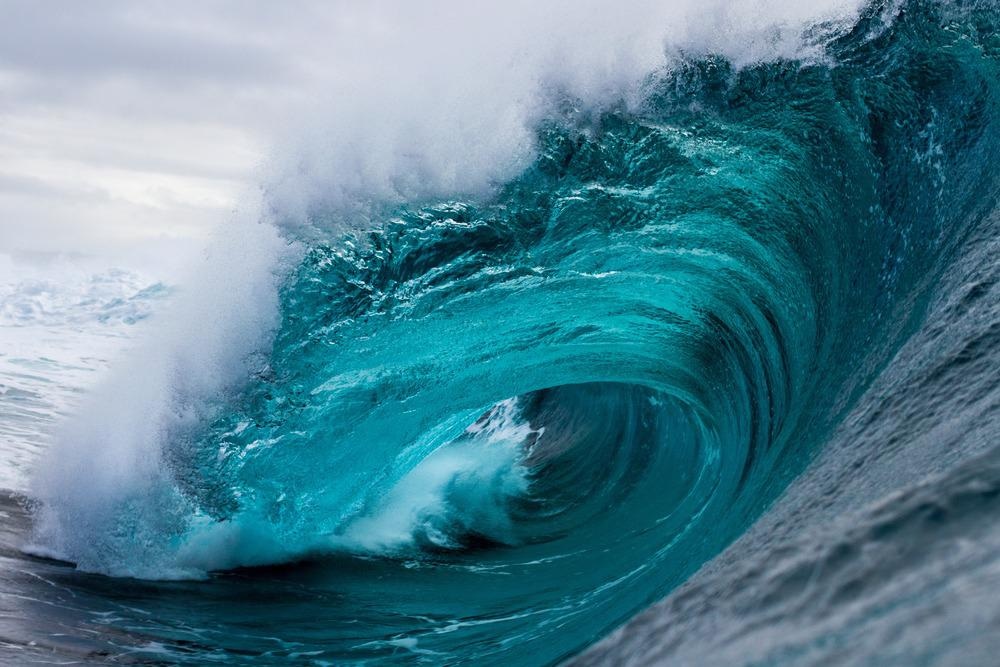In a study published recently in the Journal of Membrane Science, MXene was coupled with graphene oxide (MXene/GO) to manufacture a composite membrane as a high-performance nanofluid permeability generator for the generation of efficient osmotic power.

Study: Mechanically intensified and stabilized MXene membranes via the combination of graphene oxide for highly efficient osmotic power production. Image Credit: Brett Allen/Shutterstock.com
Importance of Green Technologies
The over-reliance on fossil fuels for energy generation has led to significant emissions of carbon dioxide. To reduce our reliance on fossil fuels, we should explore alternative, better, and more renewable power options.
The advancement of a diverse spectrum of green technologies has permitted major progress in the generation of green energy.
Among such methods, the osmotic energy derived from the saline imbalance between seawater and freshwater is a classic example that has just recently arisen and produces no CO2 emissions while also being environmentally friendly.
This readily available energy is referred to as "blue energy," and it has not yet been completely harnessed.
When it comes to harvesting osmotic energy, membrane-based technologies may be employed, enabling the Gibbs free energy generated by salinity to be utilized for power production instead of wasted.
Techniques like reverse electrodialysis (RED) and pressure retarded osmosis (PRO) have been designed to use osmotic energies. The ability of the RED technique to precisely collect energy from the salt concentration difference between saltwater and river water has sparked a flurry of research into the technology's potential for vast applications in the future.
According to new theoretical and practical investigations, RED technologies have the potential to deliver better power density translation than PRO technology.
Advantages of Multi-layered Membrane Barriers
Considering the capacity to control nanomaterials to construct homogeneous and uninterrupted sub-nano pathways with charge density modification, two-dimensional (2D) layered barriers have shown considerable promise for osmotic harvested energy in past years.
These channels offer micro space for the fast transit of ions and water molecules, resulting in an efficient route to high osmotic energy.
Ion selectivity and transmission speed have been considerably increased via pharmacological and physical alteration of the membrane surface, leading to high porosity. Despite this, there is a significant electrostatic attraction between both the nanoparticles, which may result in unwanted piling of the nanomaterials.
This may result in repetitive ion transport patterns with low charge distribution and regulation of the surface properties.
Owing to its abundance of polar surface groups (O, -OH, and -F) and superior water resilience, the functioning MXene membrane shows superior ion selectivity in particular. Nonetheless, the MXene membrane's poor tensile characteristics have hindered its upmarket manufacture and use owing to simple breakage.
To address the shortcomings of particular MXenes, an intriguing technique involving the assembly of several hybrid key components was created.
The MXene membrane showed excellent mechanical properties and composite capabilities as a result of the incorporation of commercialized mega Kevlar fibers. However, a discordant design was generated by a 2D nanochannel inserted by a 1D fiber, resulting in simple breakage and a low space charge density.
Graphene oxide (GO) was intensively explored and produced excellent outcomes in reversed electrodialysis because of its superior mechanical toughness and ion permeability.
In contrast to 1D materials, 2D GO with great flexibility and a plentiful surface charge may be coupled with multi-layered MXene materials to generate a 2D composite membrane with strong mechanical toughness because of its high charge density and consistent stability transportation paths.
Concluding Remarks
To summarise, a durable MXene composite membrane can attain maximum potential in a converter with salt concentration difference.
The addition of GO to MXene greatly improves mechanical strength. Furthermore, the MXene/GO-based composites have strong hydrophilicity, resulting in significant solute molecules permeability.
Despite the somewhat lower Zeta potential of the produced composite membrane as GO concentration increases, the strong negative potential affords excellent permeability to cations like Na+.
In the heat exchange process employing synthetic seawater and river water, the MXene/GO-6 composite membrane can achieve a maximum density, which is greater than most of the existing materials documented so far.
It also has a high power density at elevated temperatures. By modifying the test circumstances and increasing the porosity of the composite membrane, the power density may be increased even further. Furthermore, the comparatively low current density decrease over the course of years of uninterrupted testing demonstrates excellent durability that fulfills realistically required specifications.
Nanoporous Membranes Can Help Blue Energy Become a Reality: Here's How.
Reference
Wang, F., Wang, Z., Wang, S., Meng, X., Jin, Y., Yang, N., & Sunarso, J. (2022). Mechanically intensified and stabilized MXene membranes via the combination of graphene oxide for highly efficient osmotic power production. Journal of Membrane Science. Available at: https://www.sciencedirect.com/science/article/pii/S0376738822000291?via%3Dihub
Disclaimer: The views expressed here are those of the author expressed in their private capacity and do not necessarily represent the views of AZoM.com Limited T/A AZoNetwork the owner and operator of this website. This disclaimer forms part of the Terms and conditions of use of this website.